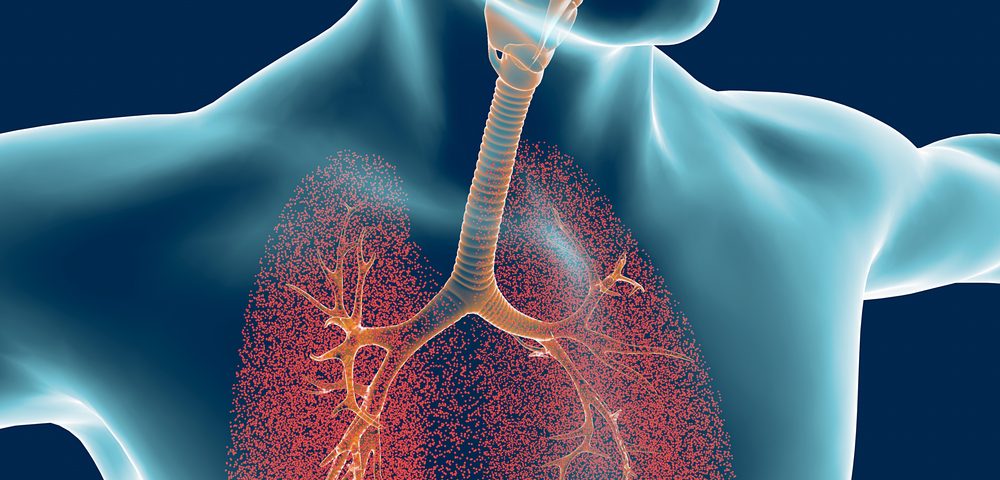People with severe asthma have worse lung function, lower quality of life, and more exacerbations if they also have bronchiectasis, an Italian study found.
The study, “Clinical features associated with a doctor-diagnosis of bronchiectasis in the Severe Asthma Network in Italy (SANI) registry,” was published in the journal Expert Review of Respiratory Medicine.
Asthma is a chronic inflammatory respiratory condition, prevalent in anywhere from 1–18% of the population in different countries.
Its severity is categorized based on the effectiveness of asthma treatments, as outlined in guidelines provided by the Global Initiative for Asthma. An estimated 5–10% of asthma patients have a severe form of the condition.
People with more severe asthma also have an increased likelihood of being diagnosed with co-existing conditions, which can include gastroesophageal reflux disease (GERD), obesity, chronic rhinitis (chronic sneezing and drippy nose), and rhino-sinusitis, or inflammation of the sinuses and nose.
Studies have shown an association between asthma and bronchiectasis, a clinical term that describes the irreversible thickening of bronchi — the tubes that carry air through the lungs — due to inflammation and infection.
It is estimated that up to 25% of asthma patients have bronchiectasis, but that number increases to as much as 67% when considering those with uncontrolled or severe asthma. In turn, 3–7% of bronchiectasis patients have self-reported having asthma.
To better investigate the relationship between asthma and bronchiectasis, researchers from several Italian institutions accessed patient data collected in the Severe Asthma Network Italy (SANI), a registry established to better understand severe asthma. In total, data were analyzed from 696 severe asthma patients older than 12.
Results showed that 108 patients (15.5%) also had a diagnosis of bronchiectasis.
Because the SANI registry contains a significant amount of information regarding each patient, the study was able to derive meaningful differences between those with asthma who do and do not also have bronchiectasis.
Looking at the demographic data, people with bronchiectasis were on average older than those without this condition (57.5 years vs. 54.5 years), though the onset age of asthma was not significantly different (age 35 vs. 33.4).
The study also found no significant differences in a number of other characteristics, including sex, body mass index, and past or present smoking habits.
Likewise, in data more specific to asthma co-existing conditions, the researchers found no differences in the presence of rhinitis, GERD, and atopy — a genetic tendency for allergic reactions — between people with or without bronchiectasis. However, the group with bronchiectasis did have a higher proportion of chronic rhino-sinusitis with nasal polyps (54.6% vs. 38%).
To analyze the overall symptoms of both conditions, the investigators looked at the results of two tools designed to measure control of asthma symptoms, the Asthma Control Test and the Asthma Control Questionnaire, and found that such control was reduced in the bronchiectasis patients.
In addition, lung function was found to be reduced in the bronchiectasis group, based on a test that measures the volume of air forced out of lungs, or percent predicted forced expiratory volume in one second. The results also indicated that a higher proportion of bronchiectasis patients had more than two breathing exacerbation events in the prior year, compared with those without bronchiectasis.
The presence of bronchiectasis also was linked to an increased likelihood of taking long-term corticosteroid therapy and a decrease in overall quality of life, as indicated by the Asthma Quality of Life Questionnaire.
The team also analyzed biomarker data, ultimately finding that both groups had higher levels than normal of inflammation-related biomarkers.
Though some of these biomarkers showed a trend toward a greater increase in bronchiectasis patients over those without the disorder, only the blood level of the antibody immunoglobin E was significantly higher in the bronchiectasis group.
Given these findings and the potentially worse outcomes in asthma patients with bronchiectasis, the researchers advocated for clinicians to screen people with severe asthma for bronchiectasis, using lung function tests and a CT scan.
In conclusion, “severe asthma associated with bronchiectasis represents a particularly severe asthma variant,” the scientists wrote. “We therefore suggest that bronchiectasis should necessarily be assessed in severe asthmatic patients.”

